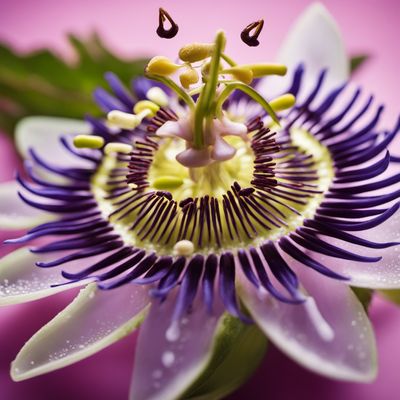
Ingredient
Banana passionfruits
The Tropical Delight
Banana passionfruits are small, oval-shaped fruits with a vibrant yellow or orange skin. The flesh is juicy and filled with small black seeds, surrounded by a gelatinous pulp. The flavor is a delightful blend of sweet banana and tangy passionfruit, with a tropical aroma. The texture is smooth and slightly crunchy due to the seeds. These fruits are commonly used in desserts, beverages, and tropical-inspired dishes.
Origins and history
Banana passionfruits are native to South America, particularly Brazil and Paraguay. They were introduced to Hawaii in the late 1800s and have since become naturalized in the region. In Hawaii, they are considered invasive species due to their rapid growth and ability to smother native plants. However, their delicious flavor and unique appearance have made them popular in local cuisine and tropical gardens.
Nutritional information
Banana passionfruits are a good source of vitamin C, vitamin A, and dietary fiber. They are also low in calories, making them a healthy addition to a balanced diet. A 100-gram serving of banana passionfruit contains approximately 60 calories, 14 grams of carbohydrates, and 2 grams of fiber.
Allergens
There are no known allergens associated with banana passionfruits.
How to select
When selecting banana passionfruits, look for fruits that are fully ripe. The skin should be vibrant in color, either yellow or orange, and slightly wrinkled. Avoid fruits with green or brown spots, as they may be underripe or overripe. The fruit should give slightly when gently squeezed, indicating that it is ripe and ready to eat.
Storage recommendations
To store banana passionfruits, keep them at room temperature until they are fully ripe. Once ripe, they can be stored in the refrigerator for up to 1 week. If you prefer a softer texture, store them at room temperature. Avoid storing them near other fruits, as they can release ethylene gas, which may cause premature ripening or spoilage.
How to produce
Banana passionfruits can be grown in tropical or subtropical regions with warm temperatures and well-drained soil. They require full sun exposure and regular watering. The vines can be trained on trellises or allowed to sprawl on the ground. It takes approximately 1-2 years for the plants to start producing fruits.
Preparation tips
To prepare banana passionfruits, simply cut them in half lengthwise and scoop out the flesh with a spoon. The seeds are edible and add a pleasant crunch to dishes. The fruit can be eaten fresh, added to fruit salads, blended into smoothies, or used as a topping for desserts. The pulp can also be strained to extract the juice, which can be used in cocktails or as a tropical flavoring for sauces and dressings.
Culinary uses
Banana passionfruits are commonly used in desserts, such as pies, tarts, and cakes. They can also be used to make jams, jellies, and fruit sauces. In tropical regions, the fruit is often eaten fresh or used in fruit salads. The juice is a popular ingredient in tropical cocktails and beverages. Additionally, the pulp can be used as a natural food coloring or flavoring for ice creams and sorbets.
Availability
Banana passionfruits are commonly available in tropical regions, particularly in South America and Hawaii. They can also be found in some specialty grocery stores or tropical fruit markets in other parts of the world.


